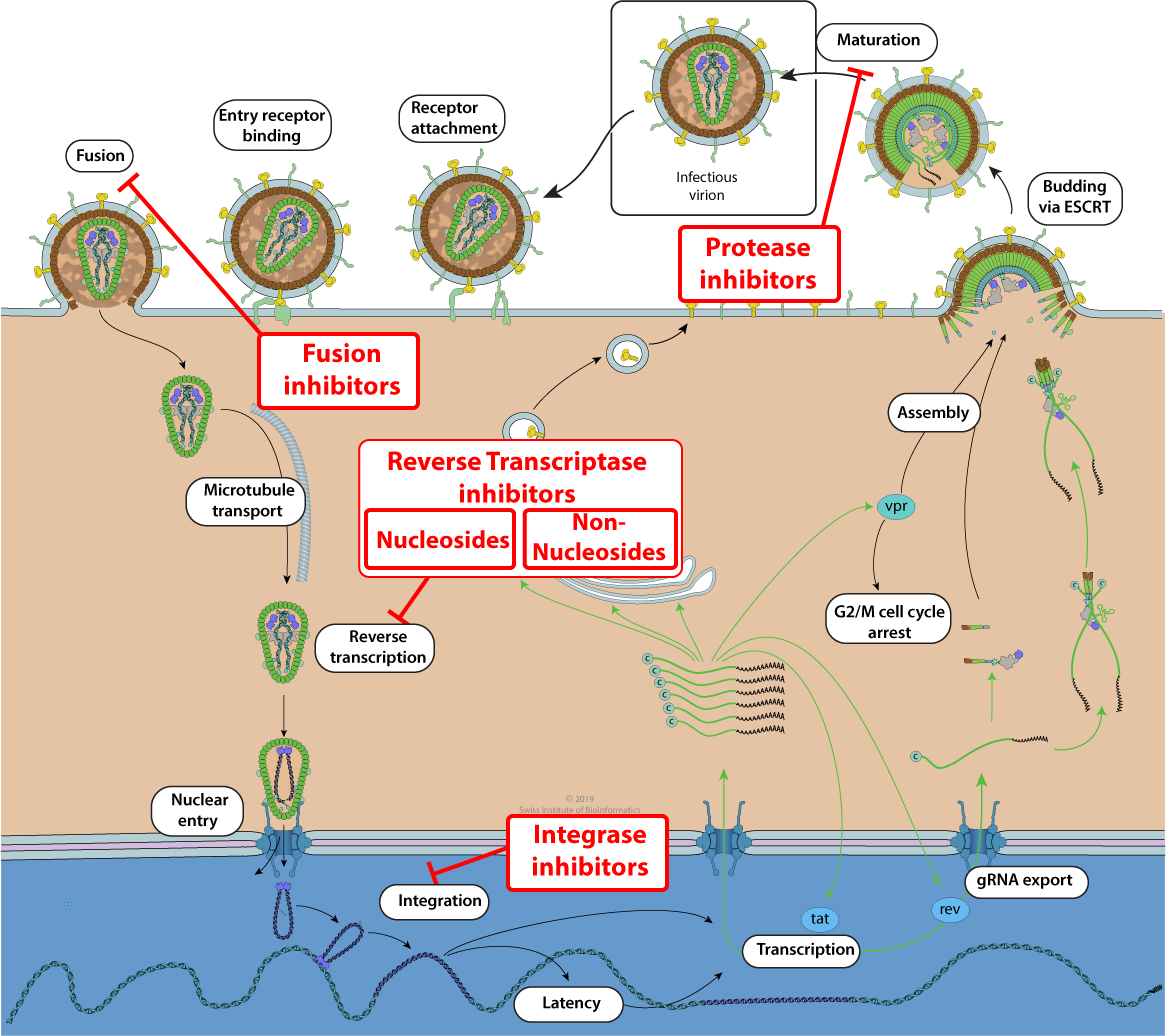HIV antiretroviral drugs

The management of AIDS disease includes the use of multiple antiretroviral drugs in an attempt to control HIV infection. There are several classes of antiretroviral agents that act on different stages of the HIV life-cycle  .
.
Antiretroviral drugs classes
| Class | Human therapy |
| NRTI: Nucleoside Reverse Transcriptase Inhibitors | Approved |
| NNRTI: Non-Nucleoside Reverse Transcriptase Inhibitors | Approved |
| PI: Protease Inhibitors | Approved |
| INI: Integrase Inhibitors | Approved |
| Entry/Fusion Inhibitors | Approved |
| Transcription inhibitors | Experimental |
| Maturation inhibitors (bevirimat) | Experimental |
Combination therapy
Each of these drugs can lower virus replication but with average success due to virus latency and resistance mutations
 . To circumvent this, treatment of AIDS involve multiple drugs that act on different viral targets, this is called highly active antiretroviral therapy (HAART). In general, three different antiretrovirals from two or more different classes are used together to treat HIV. The principle behind this revolutionary advancement is that HIV cannot be cured and monotherapy will not prevent the virus from harming the patient.
. To circumvent this, treatment of AIDS involve multiple drugs that act on different viral targets, this is called highly active antiretroviral therapy (HAART). In general, three different antiretrovirals from two or more different classes are used together to treat HIV. The principle behind this revolutionary advancement is that HIV cannot be cured and monotherapy will not prevent the virus from harming the patient.
Such treatment regimens have led to the development of fixed-dose/ multi-class combination drugs where two or more different drugs from one or more different antiretroviral drug class are combined into a single pill with fixed doses of each drug.
Kalyan Das, Eddy Arnold
Curr Opin Virol April 2013; 3: 111?118
Michael J. Zapor, Kelly L. Cozza, Gary H. Wynn, Glenn W. Wortmann, Scott C. Armstrong
Psychosomatics December 2004; 45: 524?535
Kalyan Das, Eddy Arnold
Curr Opin Virol April 2013; 3: 111?118
